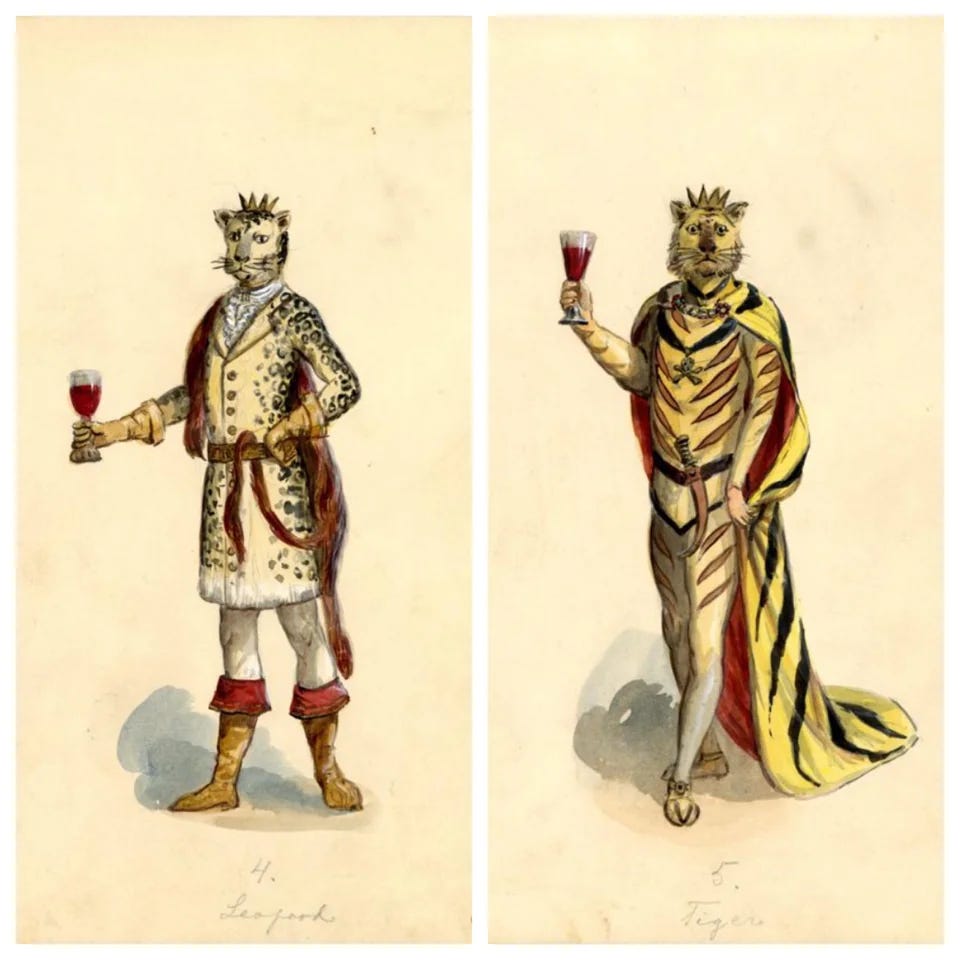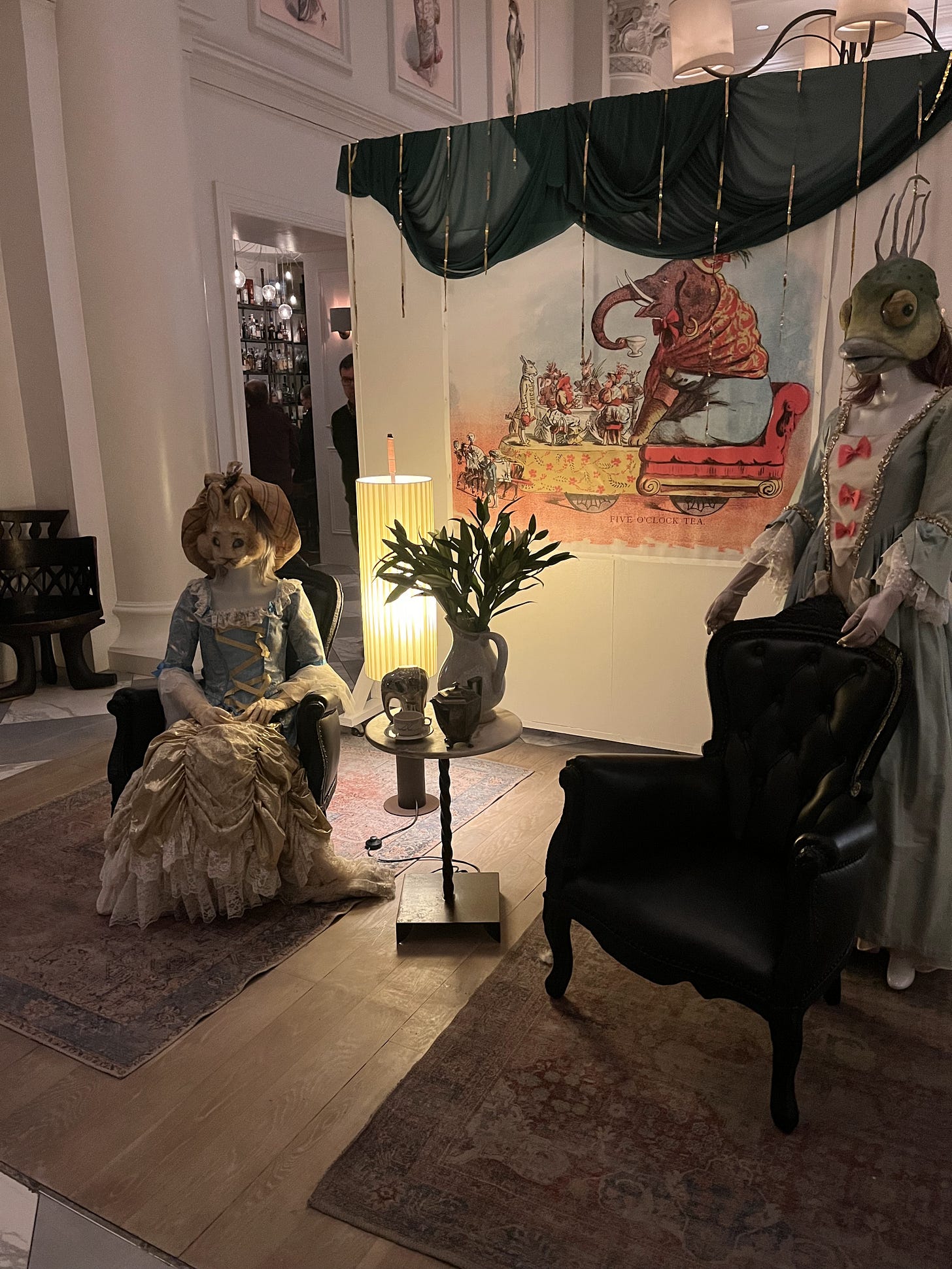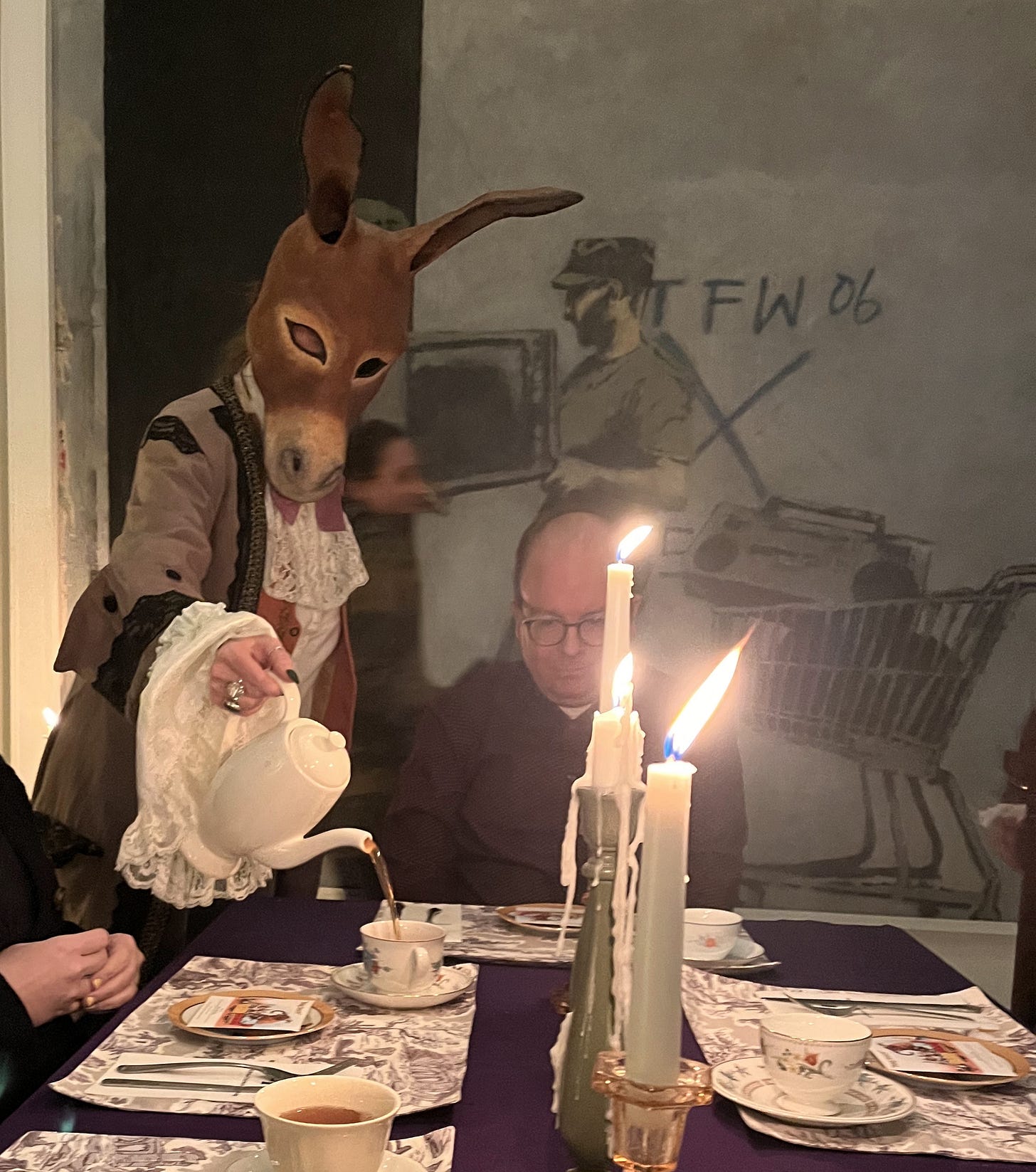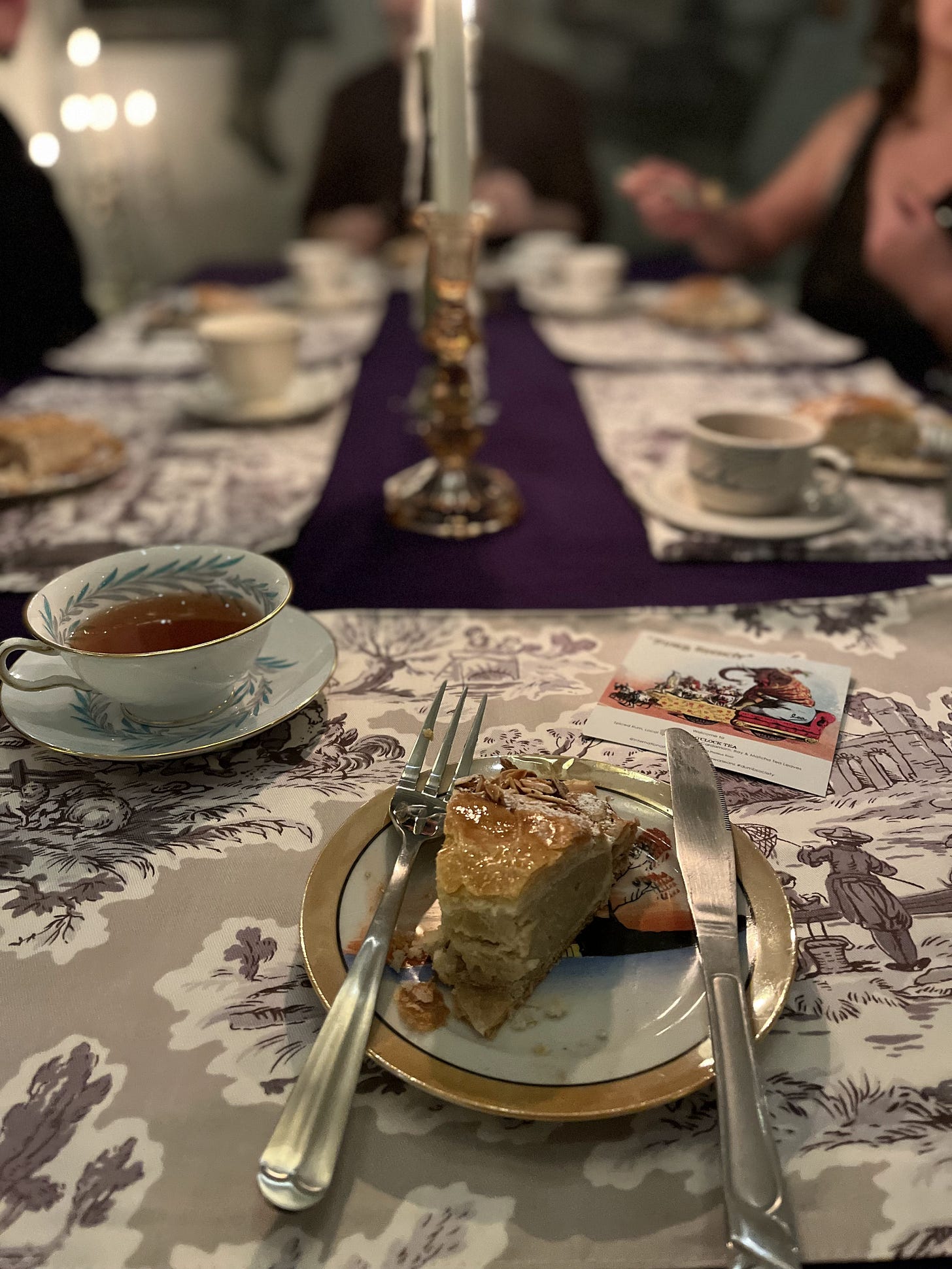A Dumb Society tea party in NOLA
Drinking spiked tea and eating king cake served by a donkey in a fancy hotel bar

Last month, Historiola! launched on Twelfth Night with a post on Carlotta Bonnecaze, the first Creole, and the first woman, to design Mardi Gras floats. Today, February 20, is Lundi Gras. It’s the last day the International House Hotel hosts its yearly ritual (its word) in honor of Bonnecaze, a Five O’Clock Tea based on her 1896 “Dumb Society” designs for the Krewe of Proteus.
As Henry Schindler, the leading historian on Mardi Gras floats and costumes, wrote, “what set ‘Dumb Society’ apart, what placed it among Carnival’s greatest works was the sly charm and perfectly pitched humor of Bonnecaze's watercolors.
“Each of the pageant's 18 scenes was set amid the paper-mache decors of nature and featured varous members of the animal kingdom, all clothed in human costumes and performing human activities… Lion presided at the table of ‘A Royal Banquet’ before a group of elegantly clad large cats... white mice primped and pranced in organdy pinafores beneath the steady gazes of ‘Watchful guardians,’ papier-mache cats standing 18 feet high.
“More than a century later, the Bonnecaze paintings for ‘Dumb Society’ remain a wry, one-of-a-kind masterpiece,” he continued. “The cast of this Mardi Gras menagerie appears as lively and winning today as they were on the night they performed their inspired pantomimes.”
Loa, the bar at International House, hangs Bonnecaze’s watercolors in its lobby every Carnival season and re-enacts tiny versions of those pantomimes in the two weeks leading up to Mardi Gras at its Golden Age of Carnival Tea Parties. After writing about Bonnecaze, it was hard to resist booking a spot. Though we couldn’t get a reservation for the actual 5 o’clock tea on February 9, we did manage to get into the second round at 6:15 pm.
The main inspiration is “Five O’Clock Tea,” Bonnecaze’s design for a satirical float featuring frolicking monkeys, horses and donkeys tipping back cups with a lady elephant, who sits on her own jumbo-sized red sofa.
Unlike Carlotta’s tea, the six of us seated at Loa that night were boring, standard-issue human beings. Our guide was Loa’s creative director, Abigail Gullo, who gave us an overview of Bonnecaze’s life, her art, and French New Orleans. The table was set with French toile placemats and mixy-matchy vintage teacups and saucers. Our first pour — served by a donkey — was Gullo’s version of a traditional rum punch, “a blend of spiced rum, local tangerine, and lime, suffused with bay and matcha tea leaves and a whisper of cardamon.”
Though one of us showed up wearing a sparkly Carnival crown (a longtime NOLA resident, natch) we were a muted bunch; Newbie Orleans wore earth tones, and I wore all black, as did the couple to our left, a pair visiting from New York City. When Gullo handed us a Ziploc bag full of animal noses to wear in the spirit of the tea, it wasn’t a shock we all took a pass on transforming ourselves into Bonnecazian creatures.
After the bag of snouts and whiskers dissapeared, our donkey waiter served king cake, made by TM Breads and Pastries. As Gullo explained, it was made in the traditional French way, similar to marzipan in flavor and texture, as opposed to the sweet roll-ish cake of 2023. In honor of IHH’s 25th anniversary, there was a silver baby hidden under one slice — one of the longtime NOLA folks found it. In addition to its shiny aura of luck, it was his ticket to some free drinks at the bar.
Continuing with the silver theme, Gullo passed out silver chalices (historically accurate, discovered in a thrift store). Into “Carolotta’s silver cup,” the donkey poured Gullo’s version of a 300-year-old French recipe for a filtered brandy milk punch that’s clear, not opaque. By this round, the animal noses started to seem like a fun and wonderful idea, but of course they’d been offered and declined, so: maybe next year?
The lucky baby-finder had a chance to head to the bar after our tea to try another of Gullo’s drinks: the Lilac Breasted Roller, based on the Pimm’s Cup. As the drink menu explains, it’s a combo of “gin, Violette, lime, cherry, berries, and bubbles.” Of the bird that inspired the drink, Gullo writes: “Oft considered the world's most beautiful flying creature, it was one of the many lovely things the goddess Istar (muse of the Babylon parade) loved... and destroyed. Its young, in varied shades of brown, develop stunning pastels. They mate for life, fly like acrobats, and beat their prey against a rock to kll it, then swallow it whole. Roll on, lovely winged one.”
The Loa teas are done for the year. Tomorrow is Mardi Gras. We’ve now spent a whole Carnival season in New Orleans, and neither one of us has worn purple, green and gold; left the house wearing beads; or gotten so drunk we rolled into the gutter, like on granny did during the Krewe of Chewbaccus parade. It seems we are respectful, but not standard-issue, New Orleans transplants.
Or maybe we are? As IHH notes, “when most people think of Carnival today, they see purple, green, and gold mylar, blinking beads and flowing kegs of beer — it's the most misunderstood of the many distinctive traditions celebrated in New Orleans.” If the real spirit of this city is Bonnecazian — slyly charming, humorous, animistic, traditional, weird, improvisational, sensual, sugary, bubbly, topsy-turvy, slightly tipsy, mystical, and brightly colored but soft-edged like Carlotta’s watercolor paintings — perhaps we’re on our way to being True Citizens of our adopted city.









This was so interesting to read that I decided to become a paid subscriber. I avoid the IHH but I might bite the bullet and take Mrs. King there next year. Thank you for sharing.
The first Mardi Gras event I’ve seen described in years that made me a little envious of those who got to experience it.